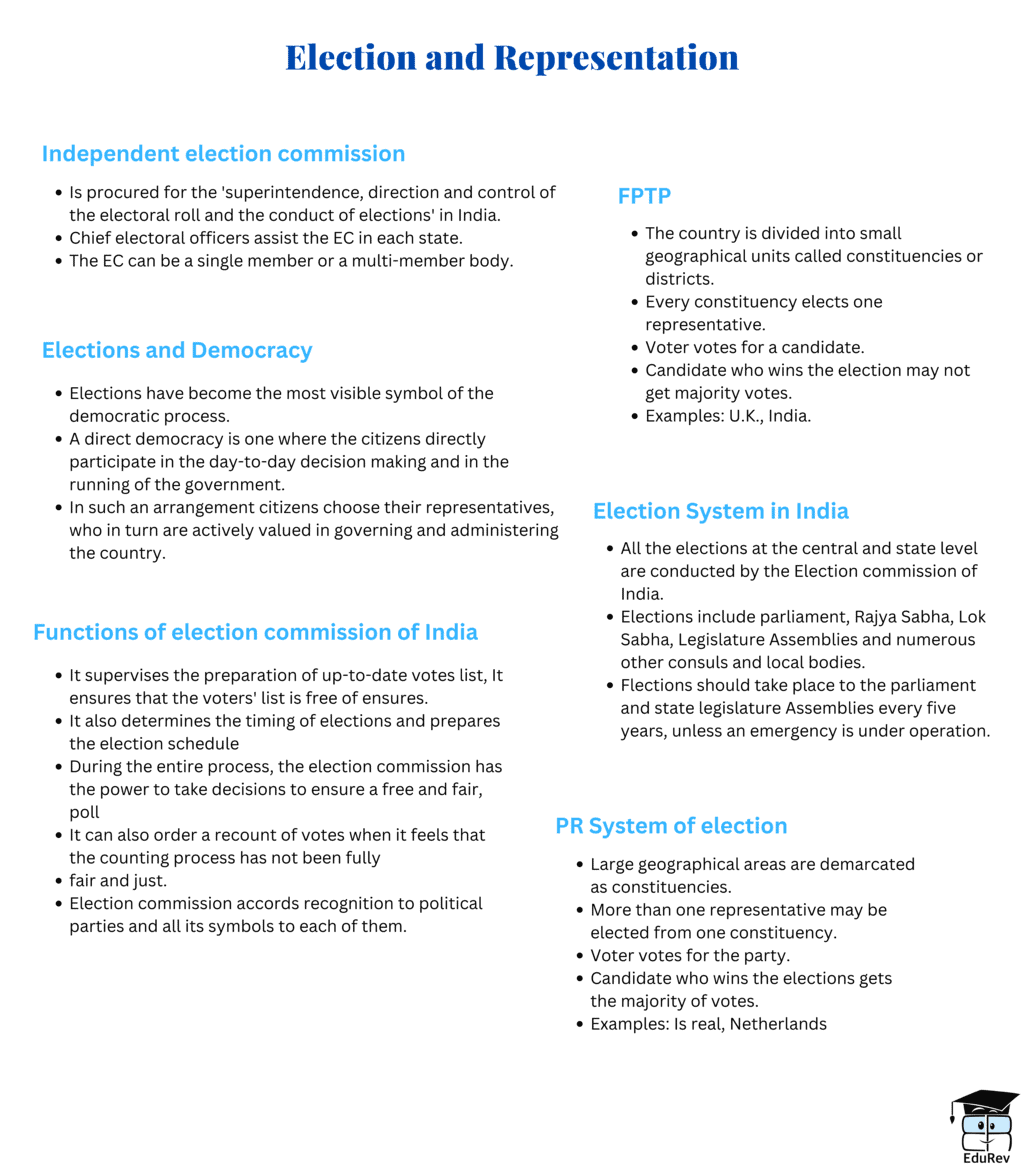Humanities/Arts Exam > Humanities/Arts Notes > Political Science Class 11 > Mind Map: Election and Representation
Mind Map: Election and Representation | Political Science Class 11 - Humanities/Arts PDF Download

The document Mind Map: Election and Representation | Political Science Class 11 - Humanities/Arts is a part of the Humanities/Arts Course Political Science Class 11.
All you need of Humanities/Arts at this link: Humanities/Arts
|
44 videos|387 docs|50 tests
|
FAQs on Mind Map: Election and Representation - Political Science Class 11 - Humanities/Arts
| 1. What is the purpose of elections in a democracy? |  |
Ans. Elections in a democracy serve the purpose of allowing citizens to choose their representatives who will make decisions on their behalf. It ensures that power is not concentrated in the hands of a few individuals and provides an opportunity for the public to participate in the decision-making process.
| 2. How are representatives elected in democratic elections? |  |
Ans. Representatives in democratic elections are elected through a voting system. Eligible citizens cast their votes to choose their preferred candidate or party. The candidate or party that receives the majority of votes in a particular constituency or district wins the election and becomes the representative of that area.
| 3. What are the different types of electoral systems used in elections? |  |
Ans. There are various types of electoral systems used in elections, including first-past-the-post (FPTP), proportional representation (PR), and mixed-member proportional (MMP) systems. FPTP is a winner-takes-all system where the candidate with the most votes wins. PR aims to allocate seats in proportion to the votes received by each party, while MMP combines elements of both FPTP and PR systems.
| 4. How does representation in elections contribute to diversity and inclusivity? |  |
Ans. Representation in elections plays a crucial role in promoting diversity and inclusivity. It ensures that different social groups, ethnicities, genders, and minority populations have a voice in decision-making processes. By electing representatives from diverse backgrounds, it allows for a broader range of perspectives and experiences to be taken into account when formulating policies and laws.
| 5. What are the challenges faced in ensuring fair and free elections? |  |
Ans. Ensuring fair and free elections can be a complex task. Some challenges include voter suppression, electoral fraud, lack of transparency, and unequal access to resources and campaign financing. Additionally, maintaining an unbiased electoral administration, providing equal opportunities for all candidates, and promoting voter education are also important considerations to ensure the integrity of elections.
Related Searches
















